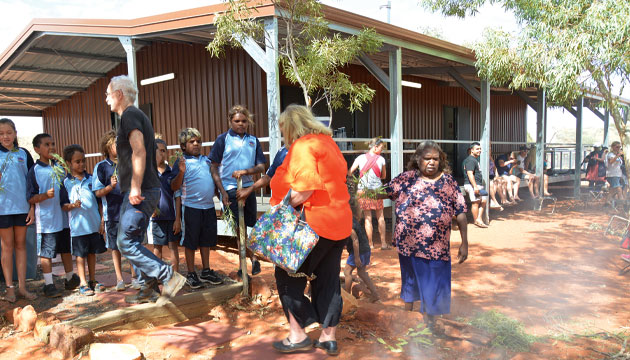Using income from Watarrka (Kings Canyon) national park, a remote community has built a classroom to keep its secondary students in school, on country.
Story Ken Eastwood
A new classroom is helping children stay in school through to year 10 at Lilla outstation, four hours west of Alice Springs. The classroom was paid for, in part, with the community’s income as traditional owners of Watarrka (Kings Canyon) National Park, supported by the Central Land Council.
“It’s a little space where the kids can go in and learn,” says traditional owner Sadie Williams. “There’s a big TV screen in front, where they can talk to other children in other schools around the state.”
Chairman of the Watarrka Foundation, Paul Jensen, says the new $320,000 classroom, computer room and office space dramatically improves the sub-optimal educational conditions in the area. The classroom allows the older children to have their own space, so that they are not in the same classroom as five year olds. Previously, teenagers trying to continue their education after primary school generally had to go to Alice Springs or to a major city such as Adelaide or Melbourne, where they typically struggle with homesickness and not fitting in culturally and socially. “What often happens, in reality, is the kids just don’t go to school,” he says.
“It’s good to have school on country for the kids to learn and do their education, and maybe as they grow older they’ll get a job,” Sadie says. “Otherwise, if they go to Alice Springs, it’s not good – they walk around the streets and that. There’s so much noise, people drinking around them and making noise, and it’s hard for the kids to concentrate on school. But our country’s good – they have a good rest and sleep … Education is very important to us and we know that keeping our kids at home for as long as possible will give them a better chance to succeed.”
The Lilla school has about 16 regular students, of whom a handful are currently in the high school age range.
This story excerpt is from Issue #125
Outback Magazine: June/July 2019










